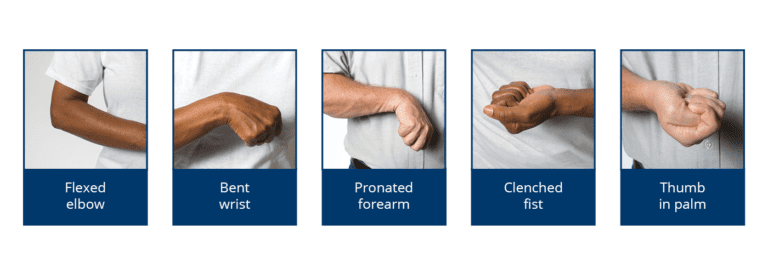Background:
Spasticity is a condition in which muscles stiffen or tighten, preventing normal fluid movement. The muscles remain contracted and resist being stretched, thus affecting movement, speech and gait.
What Causes Spasticity?
Spasticity is usually caused by damage to nerve pathways within the brain or spinal cord that control muscle movement. It may occur in association with spinal cord injury, multiple sclerosis, cerebral palsy, stroke, brain or head trauma, amyotrophic lateral sclerosis, hereditary spastic paraplegias, and metabolic diseases.
Signs and Symptoms:
Symptoms may include hypertonicity (increased muscle tone), clonus (a series of rapid muscle contractions), exaggerated deep tendon reflexes, muscle spasms, scissoring (involuntary crossing of the legs), and fixed joints (contractures). The degree of spasticity varies from mild muscle stiffness to severe, painful, and uncontrollable muscle spasms. Spasticity can interfere with rehabilitation in patients with certain disorders, and often interferes with daily activities.
How Is Spasticity Treated?
Treatment may include such medications as baclofen, diazepam, tizanidine or clonazepam. Physical therapy regimens may include muscle stretching and range of motion exercises to help prevent shrinkage or shortening of muscles and to reduce the severity of symptoms. Targeted injection of botulinum toxin into muscles with the most tome can help to selectively weaken these muscles to improve range of motion and function.
Dr. Kashouty is a leading expert on the treatment of spasticity. He believes in using all possible tools in managing symptoms. The goal is to find the right personalized treatment for each person with dystonia to improve the quality of life.
Resources:
https://www.ninds.nih.gov/disorders/all-disorders/spasticity-information-page




